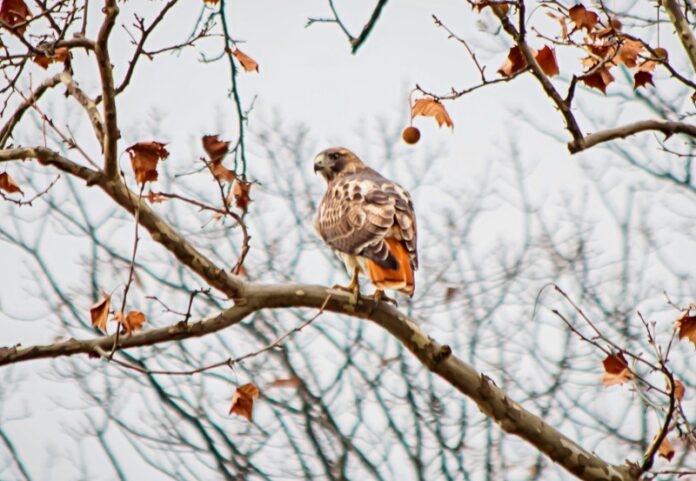
Fall is always a great time to head to the Blue Ridge Parkway, and there are many locations along the way where you’re likely to catch a glimpse of one of the Commonwealth’s native raptors soaring overhead.
In fact, Harvey’s Knob at mile marker 95.6, just north of Roanoke in Botetourt County, has been a designated spot for hawk watching for years. On a recent morning an organized expedition gathered once again for the annual migration count.
As members of the Roanoke chapter of Virginia Master Naturalists, the hawk watch offers a way to participate in the “citizen science” that is one of the organization’s main missions.
About 25 cars were already parked at the site when we arrived around 9:30. Barry Kinzie, with the Roanoke Valley Bird Club, had a wonderful breakfast of sausage gravy and biscuits plus some homemade cake waiting for the volunteers, and it really hit the spot on that cold, windy Saturday morning. Of the 50 or so in attendance, most were true birding folks.
The Harvey’s Knob watch was established in 1977 by a member of the Lynchburg Bird Club and has been a regular event for both that group and the Roanoke club ever since. In addition to being a fun and interesting way to enjoy nature, the data recorded during an official hawk watch are used by researchers to monitor the wellbeing of the different species as well as the health of their environment.
In flight, hawks are partly identified by their silhouettes. There’s a clear difference between the compact, pointy-winged American Kestrel and the much larger Red Tailed Hawk with its fan-like tail. Many hawks have a wide range in North America, and some migrate southward from August to December. The peak of the migration season in the Roanoke Valley is in September, so observation events are scheduled accordingly.
Like most enterprises involving wildlife, patience is key and not all hawk-watching days are created equal. According to some of the very knowledgeable folks there, weather determines much of what you see, with brisk, breezy conditions being ideal.
Our view was wonderful, but unfortunately very few hawks came through while we were there, mostly Broadwings. Armed with our binoculars, we counted about 14 hawks overall during this particular watch period, which was only set to last about an hour. The numbers can vary quite a bit from year to year; some seasons the watchers have counted thousands.
You don’t have to be a bird expert to take part in a hawk watch, and it’s a good opportunity to learn from the more experienced counters. The best part was the atmosphere of friendship felt from the group, which made for a great way to spend a Saturday morning.
Roanoke Valley Master Naturalists will hold another basic training class beginning Tuesday, February 25, 2014, at the Salem Public Library. For more information, visit rvmasternaturalists.org.
– Ann Stinnett


